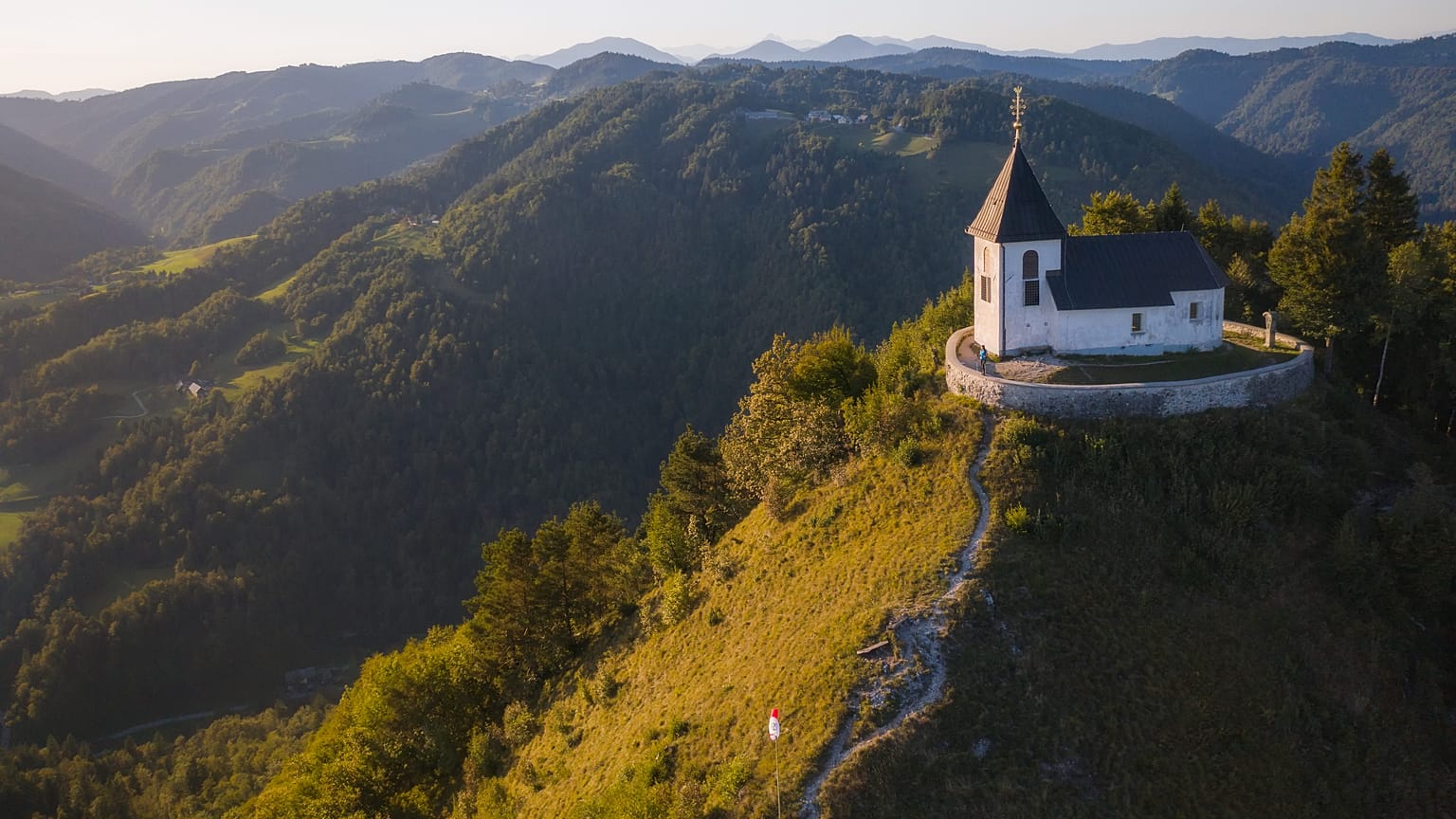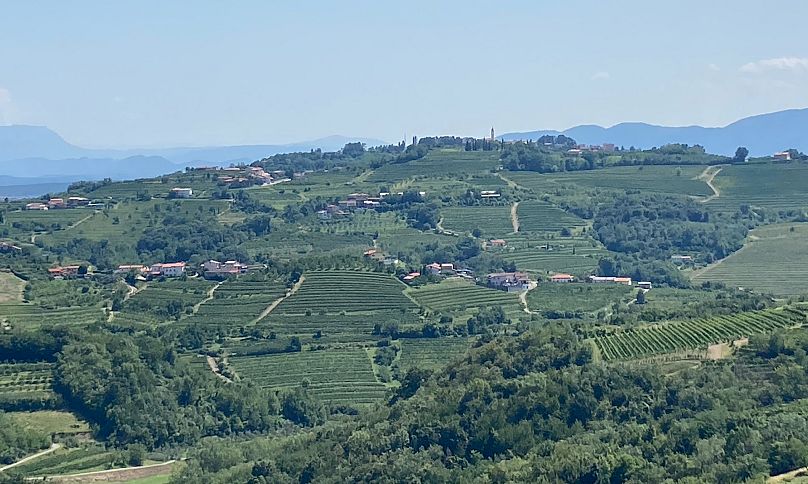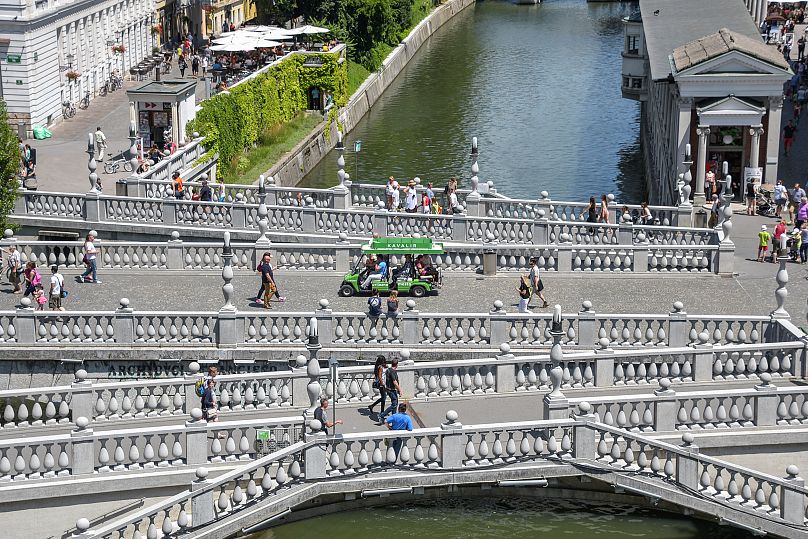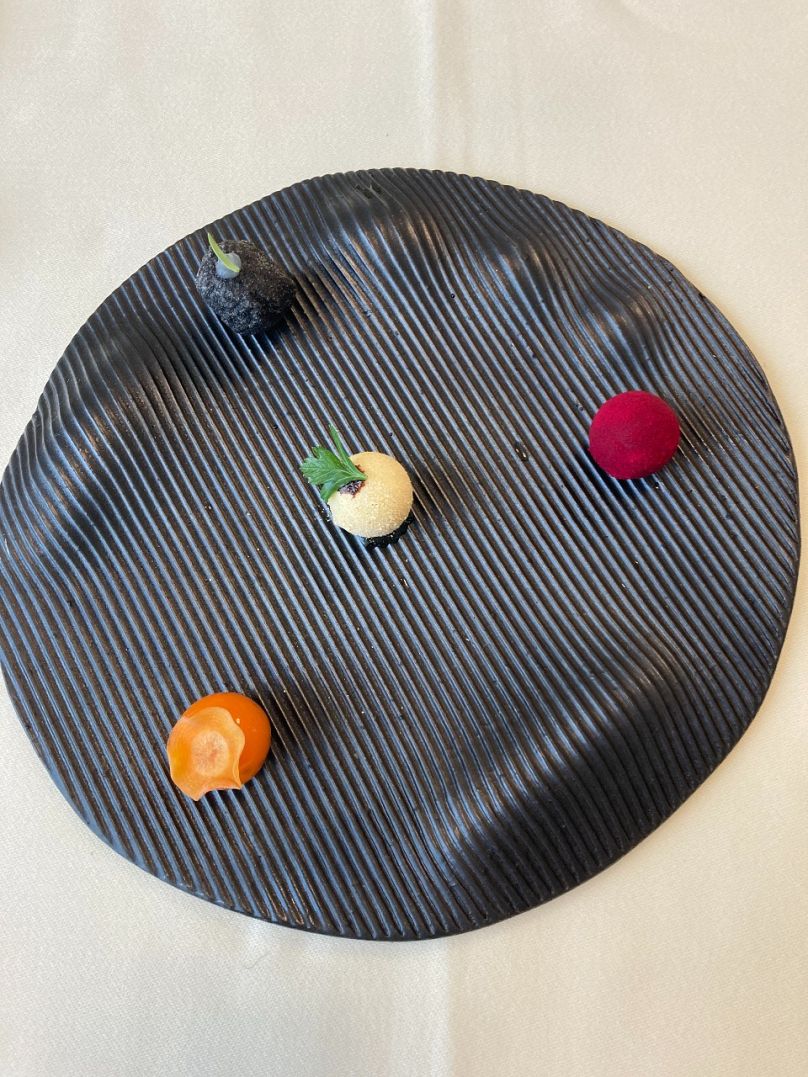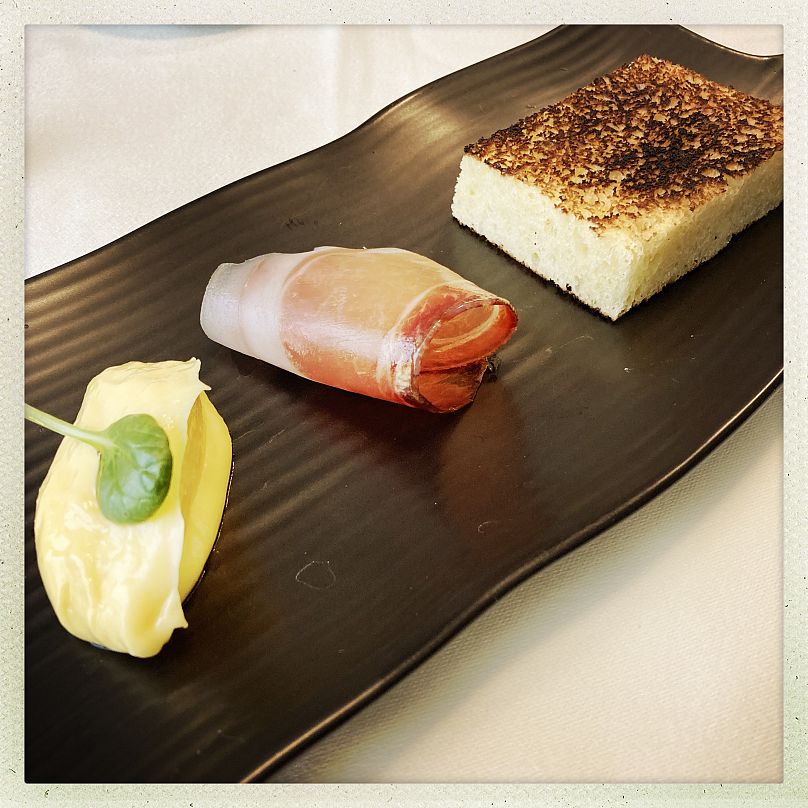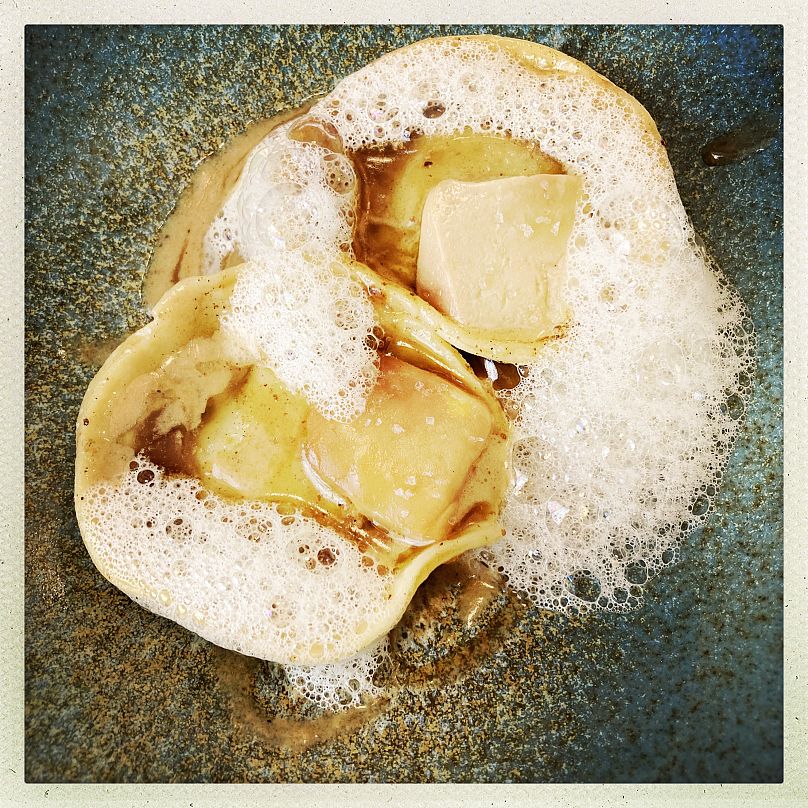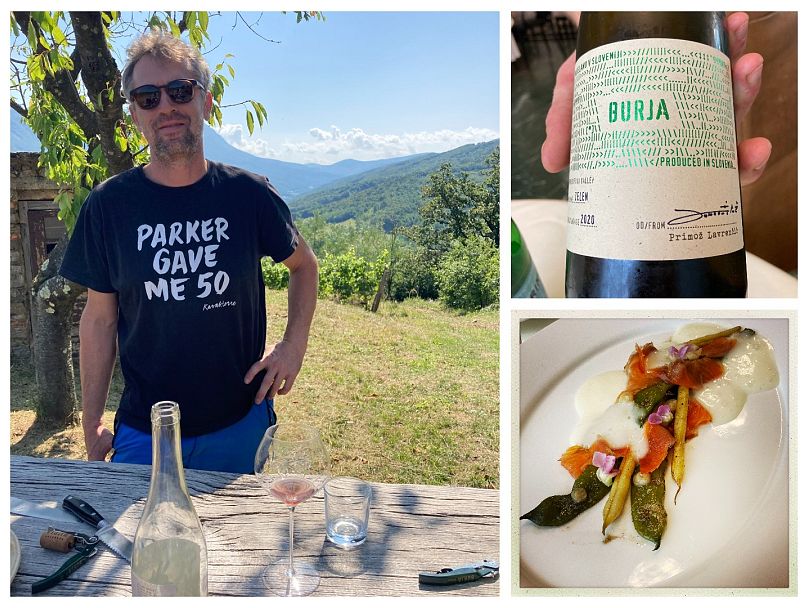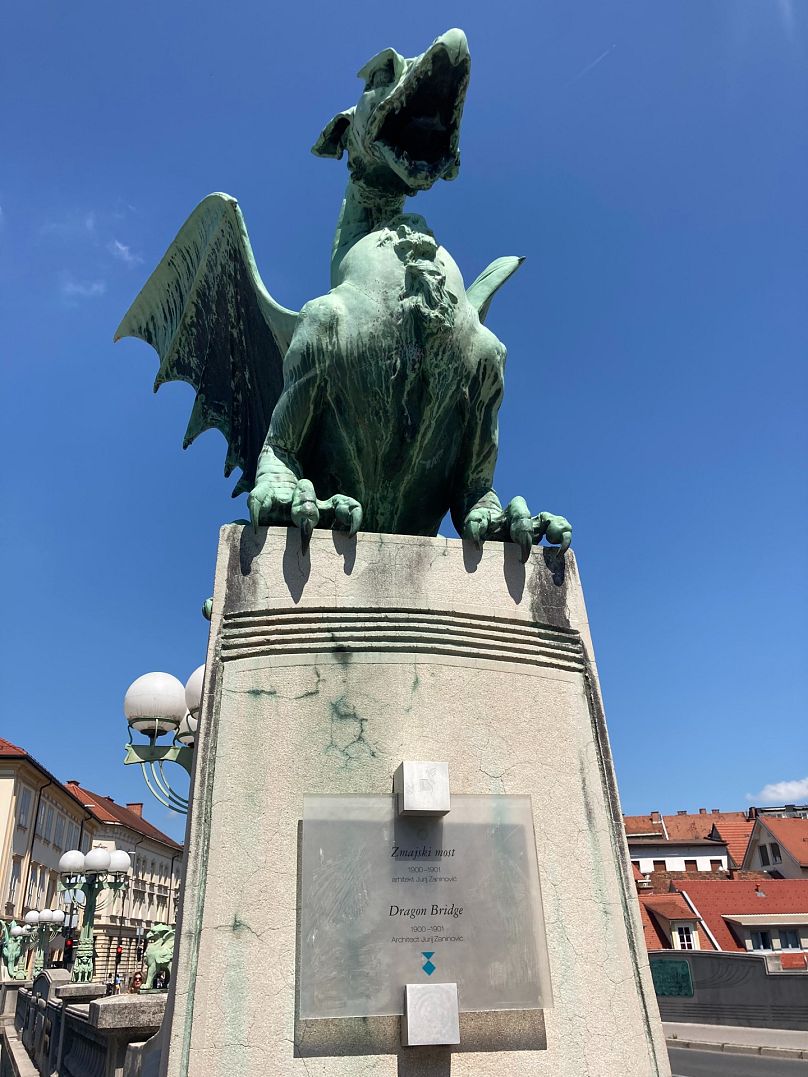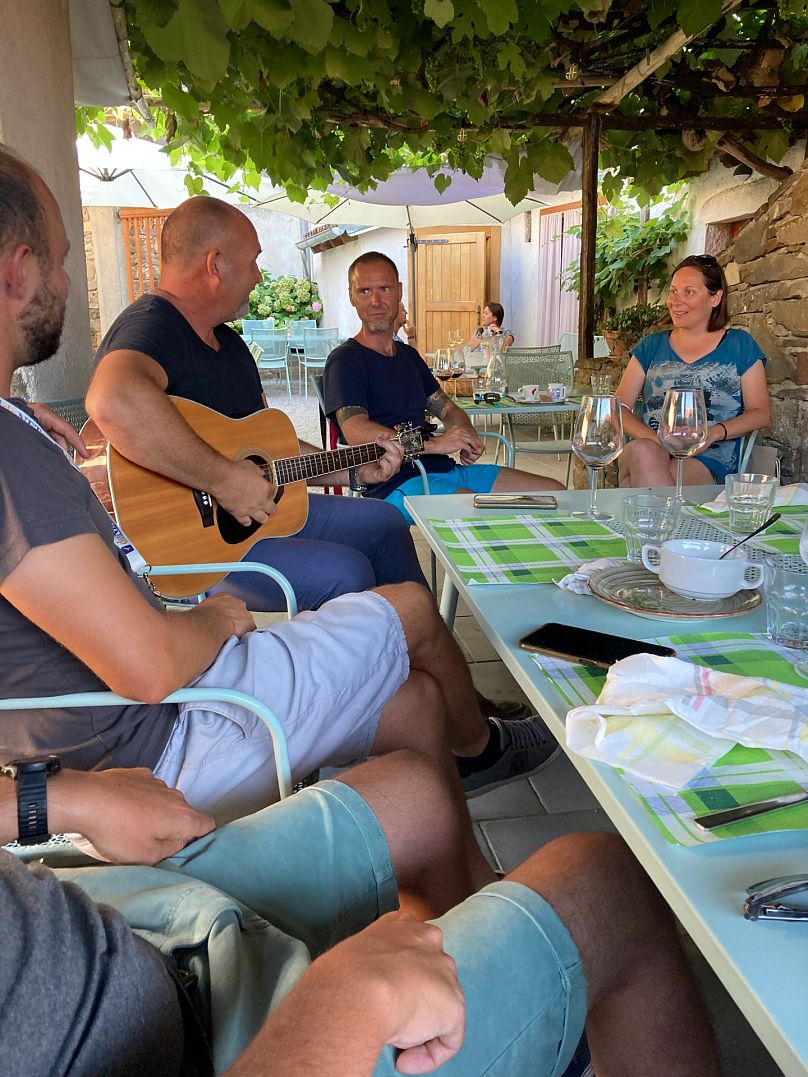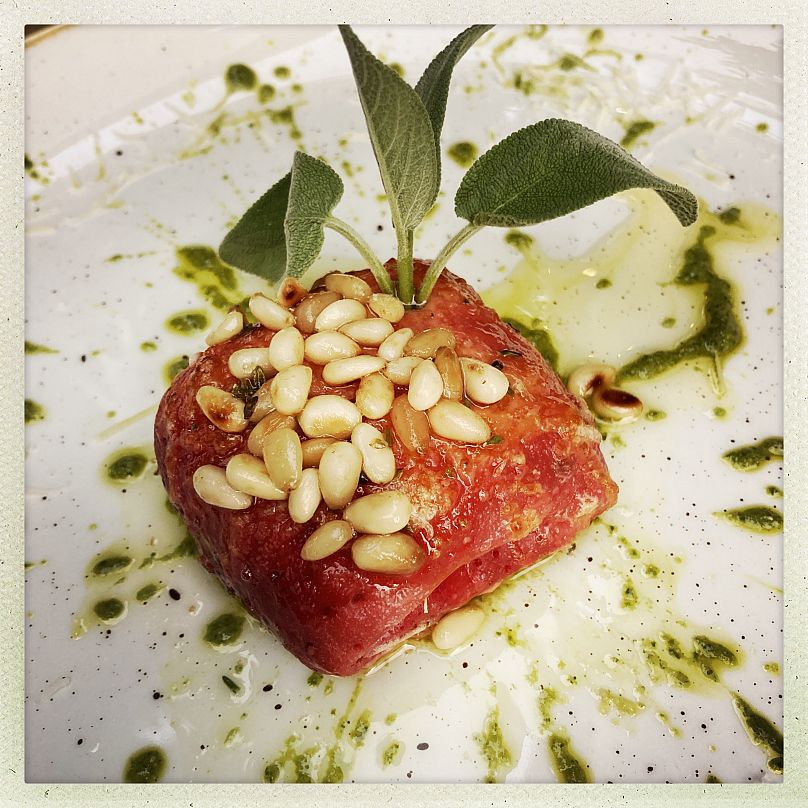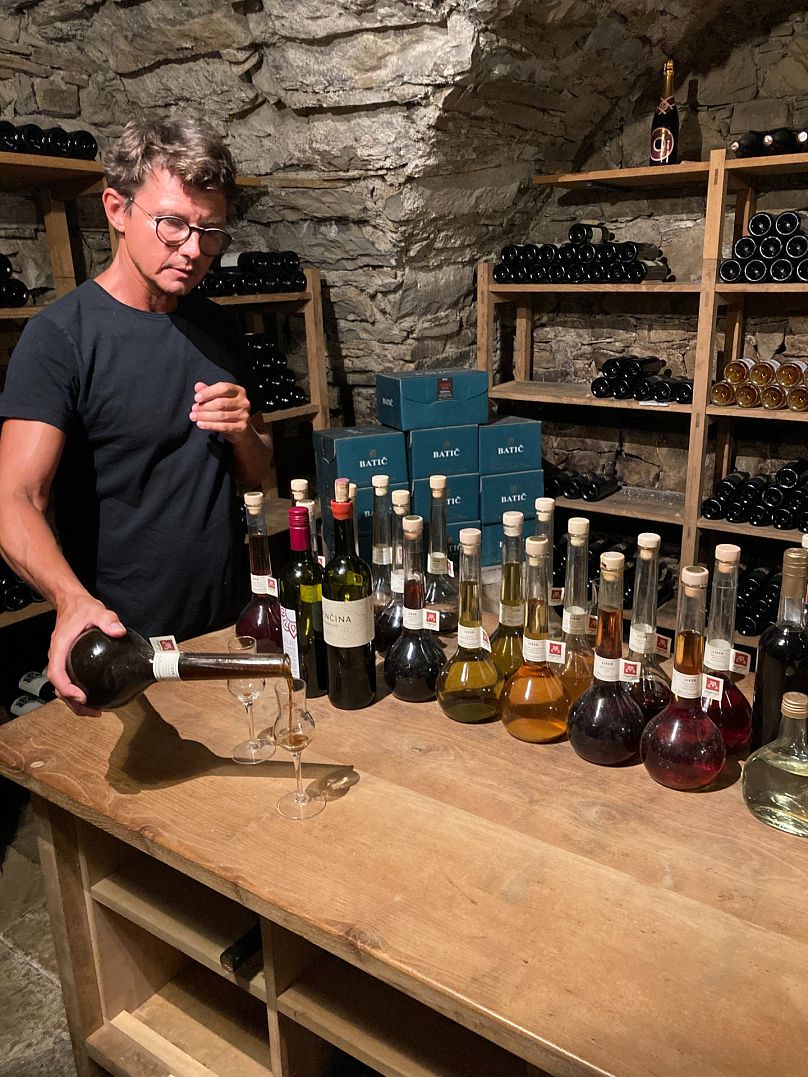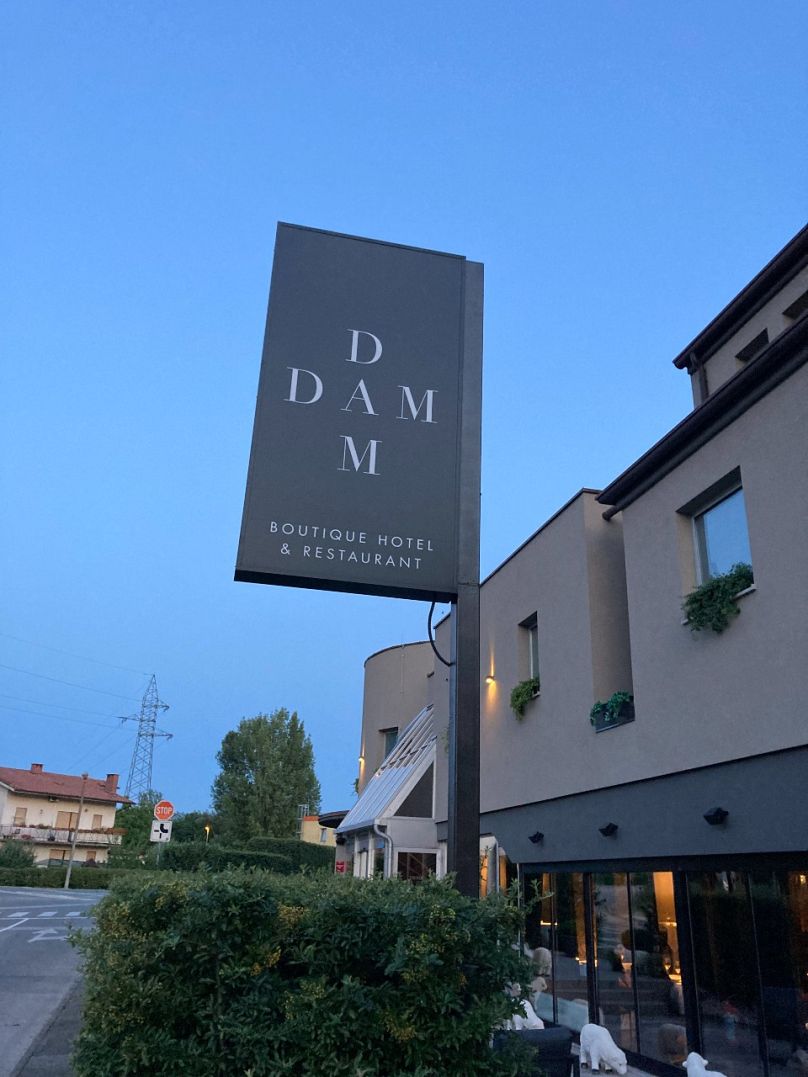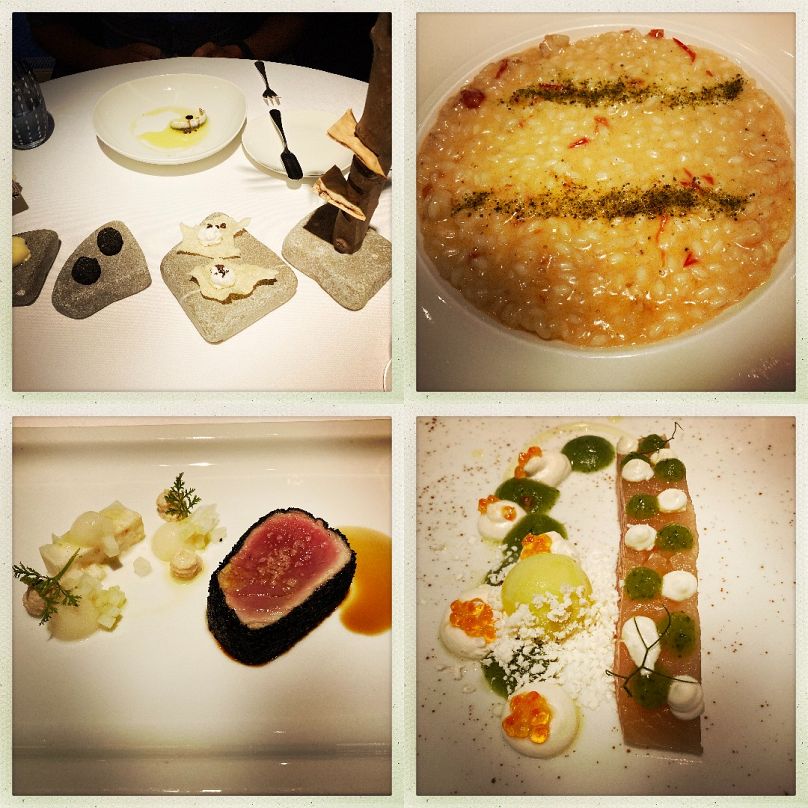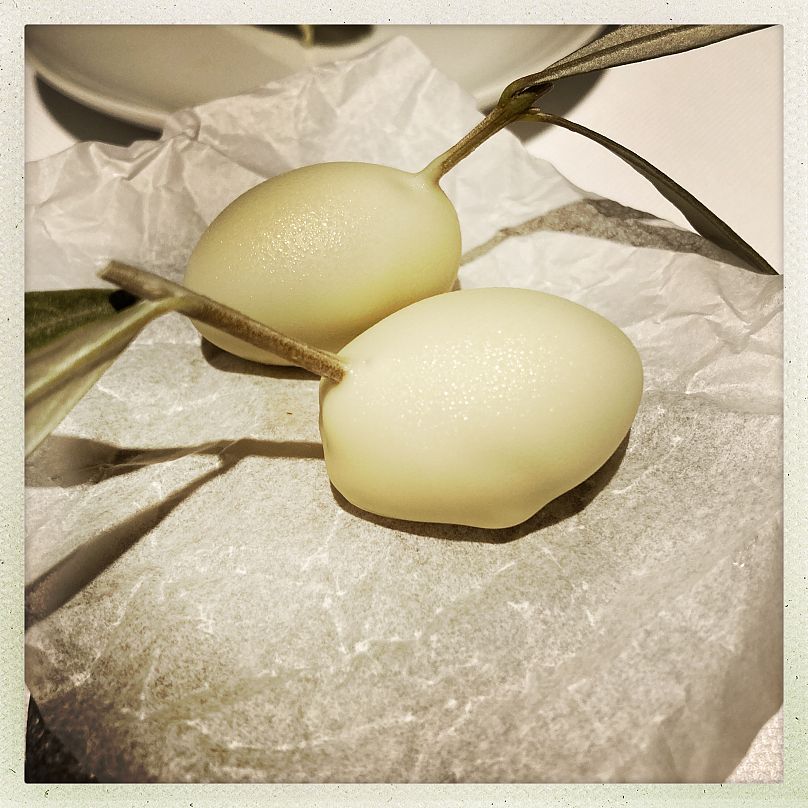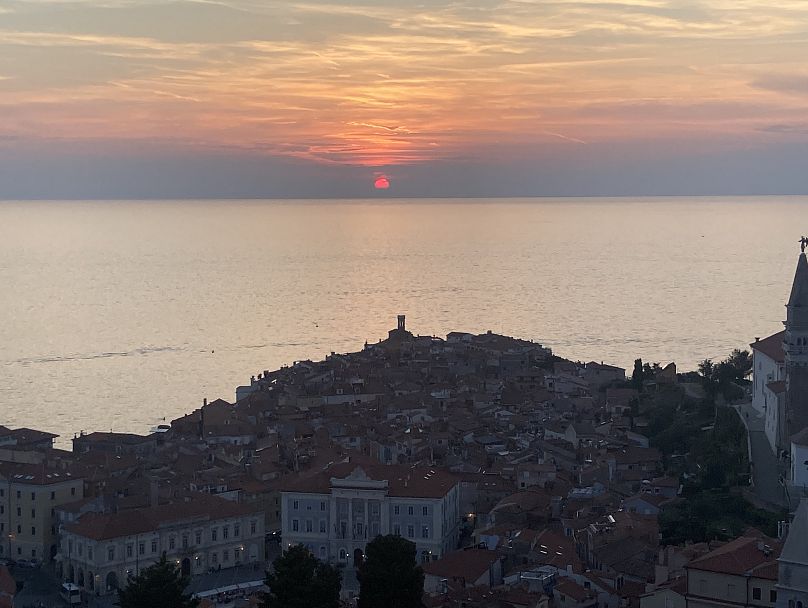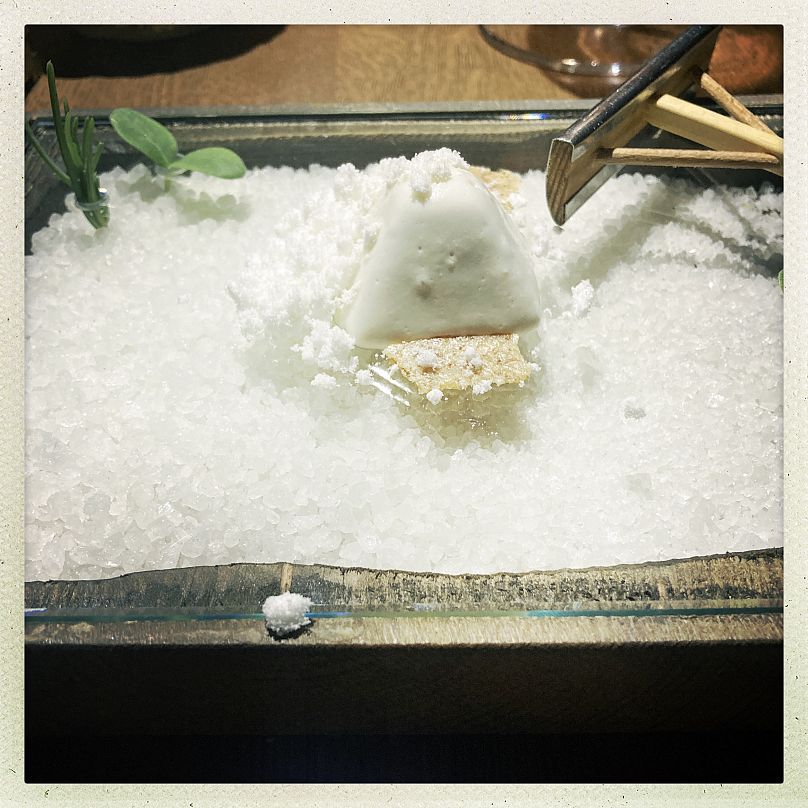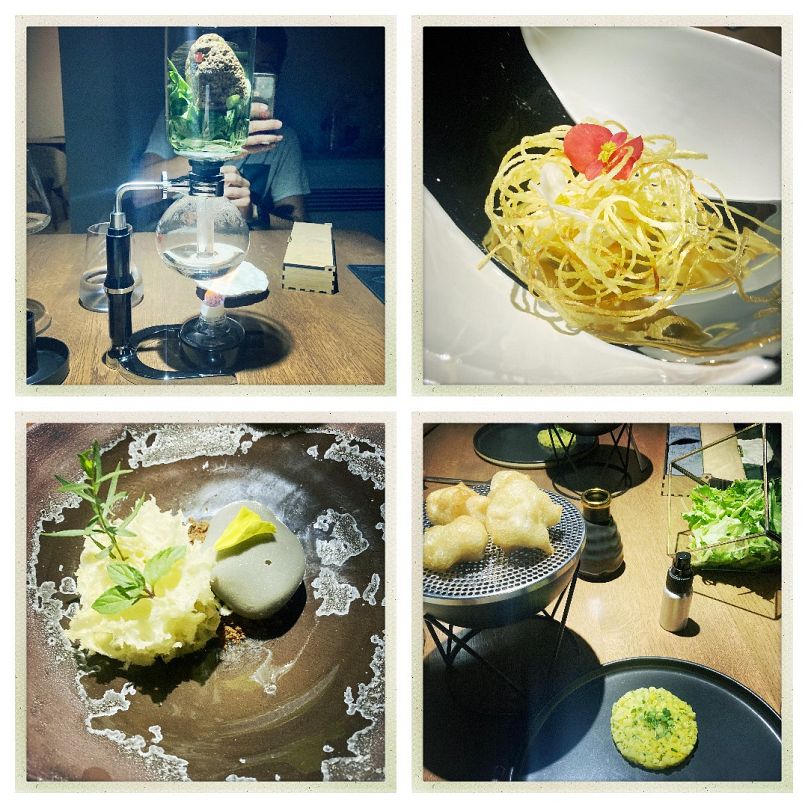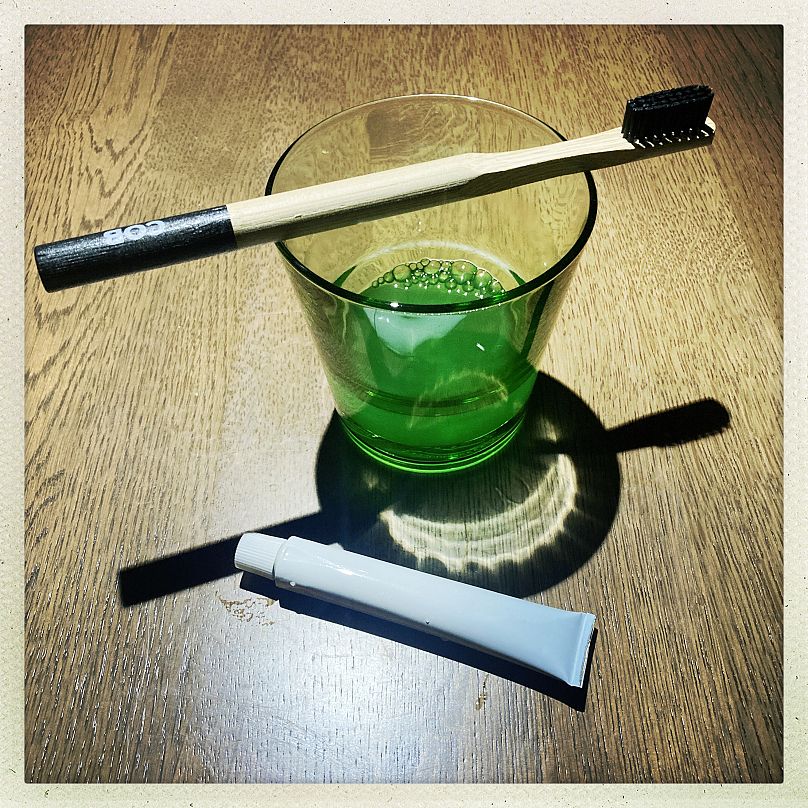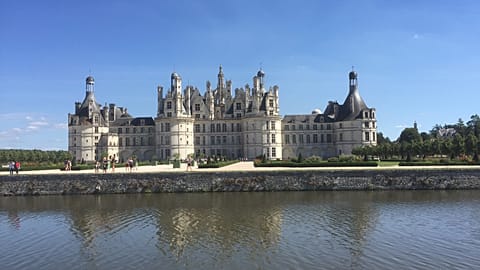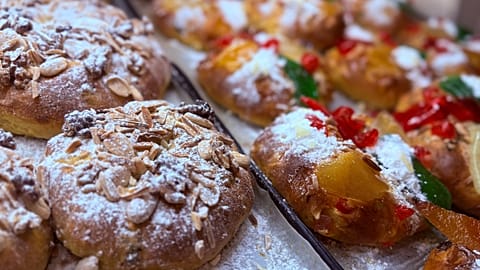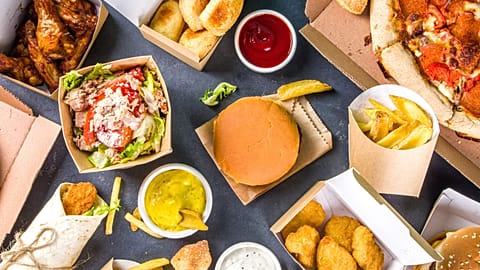Hidden gems, mesmerising food combinations, and rhubarb toothpaste. Slovenia is a must-see. Let's eat.
In many ways, Slovenia is a crossroads.
A border country where East meets West, where Schengen begins, where Balkan culture begins to blend with Latinate.
But the first thing to notice as you make your way into this fabulous place is how incredibly green it is. So verdant as to be breathtaking.
It is green in another key way, too. Slovenia prides itself on its gastronomical sustainability. The cuisine is one of elevated tradition, and the wealth of landscapes and terroir allow for two fundamental elements: an almost imperceptible carbon footprint from farm to table, and some extraordinarily good wine.
The capital, Ljubliana, is as compact a capital city as you will find, as is in its own way representative of the geography of Slovenia as a whole. Just as you can get from here to the furthest reaches of the country (including the Mediterranean and the Alps) in less than 2 hours, you can move from a riverside bar to the middle of an enormous park in a matter of minutes. It's quaint, cute even. And you won't find such a concentration of bridges anywhere else. Indeed, the main bridge leading off from the central square is three in one.
Ljubliana is a good place to start talking about the food. And there's a real treat in store for gourmet diners right in the centre.
JB Restavracija - transforming ingredients into sensations
None of the streets are busy in this city, but behind the modest doors of a restaurant that I almost couldn't find -- despite it being on a main thoroughfare -- is a hive of culinary activity. Welcome to JB.
The aforementioned Slovenian crossroads is in evidence as Art Deco-style panelled walls are adorned with contemporary art. The early jazz being played at a jazz-comfortable volume situates the room firmly in the 1920s from when the building - designed by the most celebrated Slovenian architect, Jože Plečnik - dates. The cuisine is similarly rooted in tradition, celebrating local produce and throwing light onto culinary history. A simple idea. A solid one. But when executed with passion, precision and a spirit of experimentation, it becomes powerful, it becomes more than a makeover.
Frankly, an injustice has been done. How Janez Bratovz and his team do not have a Michelin star I will never know.
Tomasz, Janez's son, brings the amuse-bouche. Beetroot, carrot, parsley and baccala (salted cod). Right there is your tradition. Four key ingredients that have been a staple part of the Slovenian diet for generations. But Bravtoz, who was the first chef to really bring nouvelle cuisine to any part of the former Yugoslavia, is a true creator.
A total flavour explosion ensues. JB's ingenious use of temperature has transformed ingredients into sensations. Take the parsley element for example (the white bite above). Parsley puree is made, frozen, then dropped into hot coconut butter which naturally creates a hardened outer shell. The stylish plate warns you ahead of time that your introductory course is going to be about textures, and they do not disappoint.
I didn't expect a sandwich for lunch here, but I got one - with a difference. Behold, the deconstructed ham sandwich.
Homemade brioche, butter made with egg yolks and ham that has been aged for four years. Four YEARS. Each element has been elevated. The ham is very special. It's from a breed called Mangalica, which over time has been given the mantle 'the Kobe of pork'. It is fine, salty and exuberantly sleek.
Following this is a succession of dishes that mesmerise.
Fresh Adriatic tuna, rolled and stuffed with creme fraiche, Japanese shiso herb (which tasted of tarragon to me) and burned aubergine. The charred vegetable politely waited until the tuna had delivered before releasing its umami bomb. A spring onion garnish fills in the rest of the flavour chart, like adding a dose of treble on a Marshall guitar stack.
You need a little acidity with Tuna, and it is provided by a slightly flabby Rebula (an indigenous varietal) with a cidery nose. The acid fest continues with a dish of shrimp and fermented lemon with miso paste and enfoamed with lemongrass. A Chardonnay from Vino Kupljen in Stajerska (Slovenia's largest wine region) accompanies this with a buttery nose and notes of pear. I close my eyes, envision the sea, and run my thumb along the contours of the plate, taking every morsel of sensory gain from this experience. What a lunch.
With a platter of smoked trout with beans, garlic and potato cream and presented like autumnal ivy climbing a porcelain wall, comes a very special wine. A Zelen (another indigenous grape variety) made by natural wine specialist and national trailblazer Primož Lavrenčič. This is an amber wine. Often called 'orange'. The name of the grape, Zelen, translates as 'green' in Slovenian. It goes through a 2 day maceration then it is matured in concrete tanks.
JB's most famous dish is Ravioli with pistachios and ricotta, pear puree, foie gras, veal cream sauce and liquorice foam (liquorice powder and milk left overnight to develop after having spent 2 hours in a sous-vide). Some more good acidity needed here (although a medium-bodied red would have also worked) and it's provided by a blend of Chardonnay, Pinela, and Rebula from Vina Krapez in the Vipava Valley. Another natural wine.
The liquorice foam is the stroke of genius that brings what could have been merely a gorgeous stodge festival in from the shed. It also began my Michelin musings. Goodness, it must have been a close run thing to give them a plate recommendation rather than a higher accolade.
When asked, Bratovz says the idea simply came from "tasting and developing". Too modest. This magic sprinkle of spume offers both sweetness and salinity, bringing the whole intriguing ensemble together without a hint of domination.
The green theme is very much in evidence while traversing the city. The Ljubljanica river has an aqua green hue as arresting as the blue Rhone in Geneva, and protecting the city is a green dragon. Legend has it that Jason (he of the Argonauts fame) slayed a dragon in the river here, stayed for the winter, then dismantled his ship and carted it to the Adriatic.
But Slovenia isn't just its capital.
Down a tiny, dusty street in the village of Goče, southwest of Vipava, less than an hour's drive from Ljubliana, there suddenly appears a little terrace with a handful of tables. Cejkotova domacija is an oasis of traditional culinary joy in the middle of nowhere.
Here, simplicity reigns, and boy is it good.
Davorin Mesesnel runs this hidden gem with his wife, whose bread and olive oil (we're very close to Italy here in Vipava) are both homemade and delicious. I'm given a glass of Malvasia that has a honey and madeleine nose, and a sprig of truly world-beating wild thyme. I look around at the stone walls that enclose our leaf-canopied table and am in love.
Assembled are Davorian and some local winemakers including Primož Lavrenčič. They are talking about their Sunday tradition.
"9 am, church. 10 am, it's all over. The women go home to cook and the men meet in a bar." Nice for the guys, I am thinking. But Primož is quick to explain that there's more to this. And it's fitting that it's him that tells me about how tradition has been updated, since that's what he himself has done with wines just down the road.
"No, no it's much more of a roster. Sure, that happens, but when it does, it's definitely me cooking the next day."
A dish of paprika-soaked pork with pepperonata and potatoes arrives as an unexpectedly sensible portion, appearing elegantly on the plate and not striking fear into my non-Balkan heart.
The owner brings a guitar to the table and sings us a traditional song from the Vipava Valley. We all listen, rapt, and feel lucky.
'One hundred people, One hundred wonders'
There is a Slovenian saying, '100 people, 100 wonders', meaning that everyone has their own way to live and to express life. It's a rather quaint way of saying live and let live, while also celebrating the richness of personal diversity. And the Vipava Valley had more richness in store.
A mere 15 minutes drive from Davorin's village, just up the hill from the wonderfully-named town of Slap, is Majerija Hotel and Restaurant. This is not just a hub for great cooking, but also a place steeped in Slovenian history.
"At least something on each plate should be connected to tradition," says Matej Tomažič who runs the establishment with his wife, Nataša. And here we have an excellent example of gastronomic sustainability.
"Our house is first a restaurant but there is also a small farm, which was organised for the needs of the restaurant," Matej says. "The first things we grew were fresh, edible herbs. In summertime we will have around 30 different herbs which we try to use in every plate as a single herb or a mixture. We also grow our own vegetables and fruits."
The bear (aka wild) garlic in the veal tartare and summer horseradish appetiser grows in the moist woodlands that surround the restaurant. It's a staple of Vipava flavour. The beetroot is the fat of the land in another course, appearing like a chunk of raw beef. Mouthwatering, perfectly balanced and paired with a rose wine from Štokelj, 2 miles away.
You feel like you could be in any century, here. Any moment now I expect to see a drunk man taken home by his wife in a wheelbarrow.
"It still happens here in Goče," chuckles Matej. I suspect he is not joking.
A 'pork cigar' follows, with wild asparagus cream, dehydrated beetroot and Hyssop (a herbal remedy for digestive problems, make of that what you will). But when I am taken downstairs I am met with what looks like an alchemist's lair.
Herbal syrups, liqueurs and marmalades adorn the subterranean shop. Honey, coffee and orange, wormwood bitter, carob, herbs, cherry amaretto. For the liqueurs, I can testify that most will delight, some will nearly kill.
Michelin has not thrown a huge number of accolades at this small and up-and-coming nation, so a gourmet tour here will allow you to try almost all of them. One such restaurant, adorned with a Michelin star, is Nova Gorica's gourmet hub, Dam.
Uroš Fakuč is the mastermind here and leads us through his tasting menu with enormous warmth. An imposing figure but a gentle soul.
Macerated champagne eases us into the evening, as does the piped easy jazz. Black marble pillars flank the Henri Rousseau-esque textured jungle print wallpaper.
Tolmin cheese coats the flesh of the trout sashimi from the Soča river like a softly contoured wallpaper in the first course proper. And we go storming into natural wine for a gnocchi dish with the asparagus carwash of Movia's Gredic 2018. It's a Friuliano, also known as Sauvignon Vert. And, like the country it comes from, it's as green as it gets for a wine. But a pallid crust spoils the delicious fish soup and creamy roe sauce of this ensemble. Presentation wrecked the party here. But it's a blip in an otherwise fascinating journey.
Sometimes it's the really simple touches that make you pause and savour, and Fakuč's white chocolate with an olive juice centre provides the most amazing finish. But equally, leftfield additions like the sprinkling of parsnip dust upon a prawn risotto give you something to dream about. A delicious saffron spike in the same dish nudges you towards memories of paella.
Slovenia's coast is not extensive, but it is beautiful. Sunset over the darkening promontory of Piran is unforgettable.
There are plenty of places to eat right by the sea, but tucked away up a hill, a short climb from the centre of Portorož, on the Adriatic, is the most fun place to eat possibly ever.
The menu at COB (which stands for Cooking Outside of the Box) is blank.
But wait.
You are then presented with a chilled piece of slate. You place your blank menu on the slate, and the temperature is the catalyst for the reveal. But still you are in a mystery. The menu has appeared, but only in symbols. Icons denoting, in an international language, mountains, a herb, a piece of corn, stones and ... a toothbrush. These appear slowly as the icy slate does its work. I have no idea what I might be about to eat. And through the wonder, the icy wind of cynicism blows across the brain. Is this going to be all fad and zero substance?
A presentation is before me. Like a half-melted snowman in his natural environment. Rabbit terrine, apparently. Olive oil powder represents the salt crystals from nearby Piran, famous for its salt pans. We are given miniature snow rakes to push, plough-like, across the tableau, against the bread (I got the gist after a couple of minutes) and create your bite. And my worries recede when it's delicious.
Looking around, everyone is smiling. It's universal fun. It feels spontaneous, but this concept has a wild intelligence behind it. Filip Matjaž, the young maestro in whose hands we find ourselves in, knows what he's doing. And his enthusiasm comes through his dishes alongside the vibrant flavours.
Our table is a stage. The light is 2.5 feet above the wood, and the effulgence covers the surface while still enthusing the feel of a laboratory.
We cook our own soup with the apparatus of a chemist. Bunsen burners and test tubes. We char our own hake balls (with - get this - smoked rosemary). The spectacle could almost distract you from the cooking, but it doesn't quite manage it. The battered hake is sublime, and its combination with a citrus-soaked potato salad and peppery salad leaves lifts the dish to glory, creating a deconstructed Istrian Sunday.
Hang on though. Remember the 'gout de terroir'. The tasting of where you are. They hit you with a dish that speaks of the location. Dried salt on the plate, tarragon mousse in the guise of a large beach pebble, sponge cake infused with lavender on a chocolate crumble 'soil'. Oh stop. No, no, don't stop. This is the most complete conceptual dish of them all. It fully represents an identifiable geographical area: The Istrian coast, where there are rocks, sponges, herbs, and salt everywhere you look and inhale.
If you intend to experience this, please don't -- as they say -- forget your toothbrush.
Slovenia was chosen as the 2021 Region of Gastronomy and for good reason. Many accolades of that kind are awarded to instil confidence, inspire investment and kickstart cultural exploration. Here, there is much already to admire. The welcome is extraordinary, the landscape diverse and rich, the food is on a constant trajectory from tradition to elevation. I suspect 2022 will unearth even more hidden gems from a nation just begging to be tasted.















